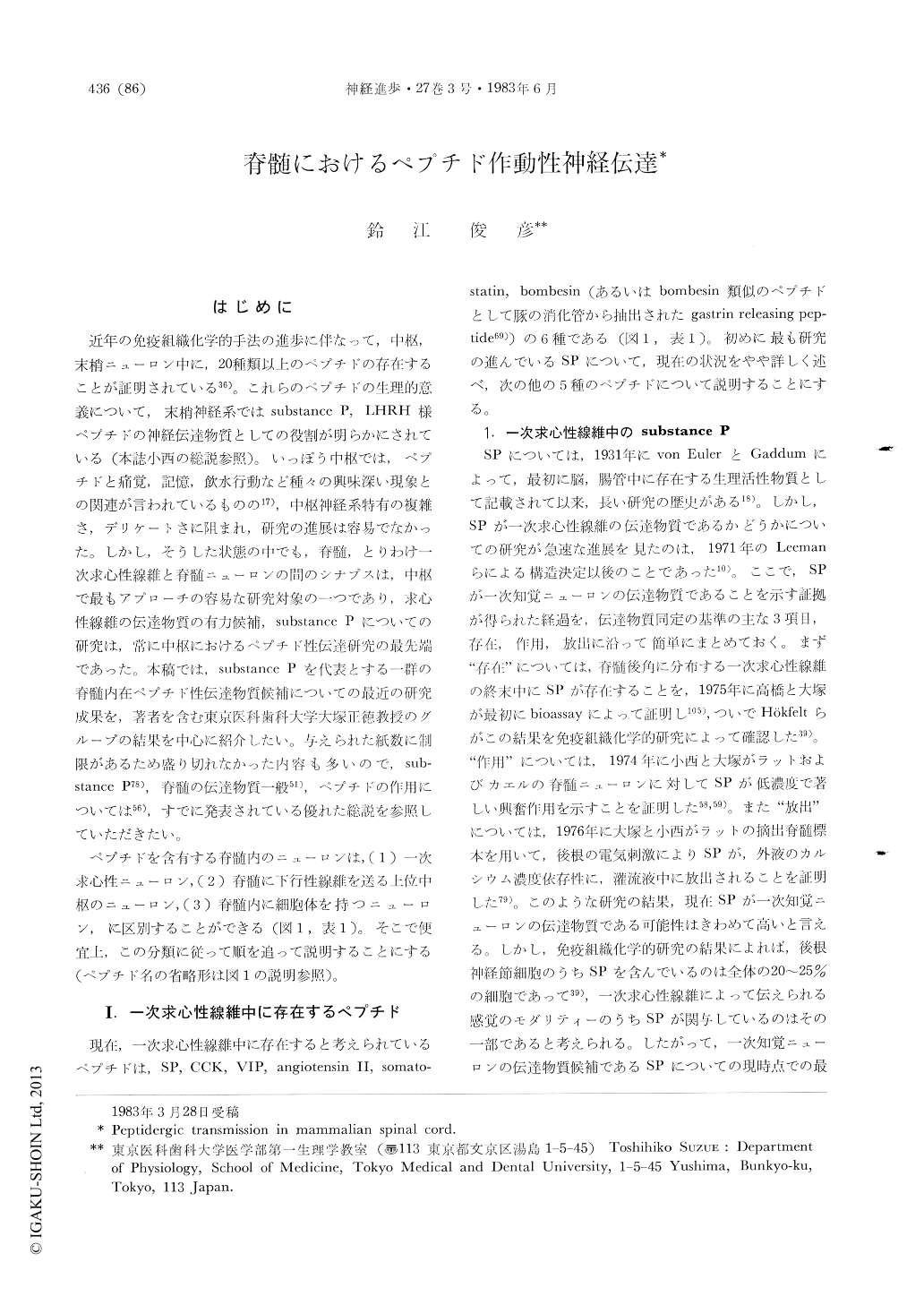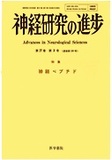Japanese
English
- 有料閲覧
- Abstract 文献概要
- 1ページ目 Look Inside
はじめに
近年の免疫組織化学的手法の進歩に伴なって,中枢,末梢ニューロン中に,20種類以上のペプチドの存在することが証明されている36)。これらのペプチドの生理的意義について,末梢神経系ではsubstance P,LHRH様ペプチドの神経伝達物質としての役割が明らかにされている(本誌小西の総説参照)。いっぽう中枢では,ペプチドと痛覚,記憶,飲水行動など種々の興味深い現象との関連が言われているものの17),中枢神経系特有の複雑さ,デリケートさに阻まれ,研究の進展は容易でなかった。しかし,そうした状態の中でも,脊髄,とりわけ一次求心性線維と脊髄ニューロンの間のシナプスは,中枢で最もアプローチの容易な研究対象の一つであり,求心性線維の伝達物質の有力候補,sutbstance Pについての研究は,常に中枢におけるペプチド性伝達研究の最先端であった。本稿では,substance Pを代表とする一群の脊髄内在ペプチド性伝達物質候補についての最近の研究成果を,著者を含む東京医科歯科大学大塚正徳教授のグループの結果を中心に紹介したい。与えられた紙数に制限があるため盛り切れなかった内容も多いので,substance P78),脊髄の伝達物質一般51),ペプチドの作用については56),すでに発表されている優れた総説を参照していただきたい。
The present status of peptidergic transmitter candidates in mammalian spinal cord is reviewed with special reference to the recent results of the electrophysiological studies on the isolated spinal cord preparation of the newborn rat. The contralateral slow potential, which was evoked by stimulation of a lumbar dorsal root and recorded from the contralateral ventral root of the same segment, was greatly depressed by application of a substance P (SP) antagonist (D-Arg1, D-Pro2, D-Trp7,9, Leu11)-SP (Yanagisawa et al., 1982).

Copyright © 1983, Igaku-Shoin Ltd. All rights reserved.


